Islam

Islam is a monotheistic religion founded in Saudi Arabia in 622 CE by the Prophet Muhammad. According to Islamic tradition, Muhammad was tending his flock when the angel Jibreel (Gabriel) appeared to him and delivered a message from God. With these revelations, Muhammad became the last prophet, succeeding other religious figures from Judaism and Christianity: Nuh (Noah), Ibrahim (Abraham), Musa (Moses), and Isa (Jesus).
The Five Pillars of Islam define the actions that all Muslims are expected to follow. The Pillars concern personal devotion, such as declaring their faith, praying, and fasting. They also reflect broader Muslim society, such as charitable giving and performing the Hajj, a pilgrimage to Muhammad’s birthplace of Mecca. Muslims believe that leading a good life pleases God, and that each person’s deeds determine their fate in the afterlife.
The most sacred text in Islam is the Qur’an, which contains the word of God as revealed to Muhammad. The Qur’an forms the basis of Islamic law, but there are many commentaries that develop how the Qur’an should be applied. Also important are biographies of Muhammad and other religious figures, as well a collection of Muhammad’s sayings and practices known as the Hadith.
Muslims congregate and worship in mosques, led by an imam. In Shi’a Islam, an imam is not only a spiritual leader, but thought to be ordained by God to lead in all aspects of life. Religious scholars are also esteemed, such as honorary allamahs and state-appointed Grand Muftis.
Denominations
Sunni – Sunni Islam is the largest religious denomination in the world, though it does not have a formal structure or leadership. Followers emphasize the habits and teachings of Muhammad as the guide for a moral life.
Shi’a – Followers of this branch split with Sunnis after the death of Muhammad in 632 CE. Shiites believe that only the Caliph Ali was the rightful successor to Muhammad, leading to the development of separate rituals and interpretation of Islamic law.
Ahmaddiya – This Sunni offshoot was founded by Mirza Ghulum Ahmad in Pakistan during the 19th century CE. Its adherents believe he was the Mahdi, or “Guided One,” that will bring about the end of the world. In addition to South Asia, Ahmaddiya congregations are in sub-Saharan Africa and Southeast Asia.
Ibadi – This branch of Islam is practiced almost exclusively in Oman. It dates back to the fracturing of Islam after the death of Muhammad.
Color
Colors are used to represent beliefs, traditions, and concepts in many religious traditions. The color green is associated with Islam because it is believed to have been the Prophet Muhammad’s favorite color. It is said he wore a green cloak and turban, and his teachings reference the color. The Qur’an states that green will be worn by the inhabitants of paradise.
White was chosen as the exhibit’s background color because it is meaningful to each of the five religions. In Islam, white symbolizes purity, cleanliness, harmony, and universal peace. White clothing is usually worn during Friday prayer and when performing the scared rites of pilgrimage. White cloth is used to wrap the body of a deceased Muslim.
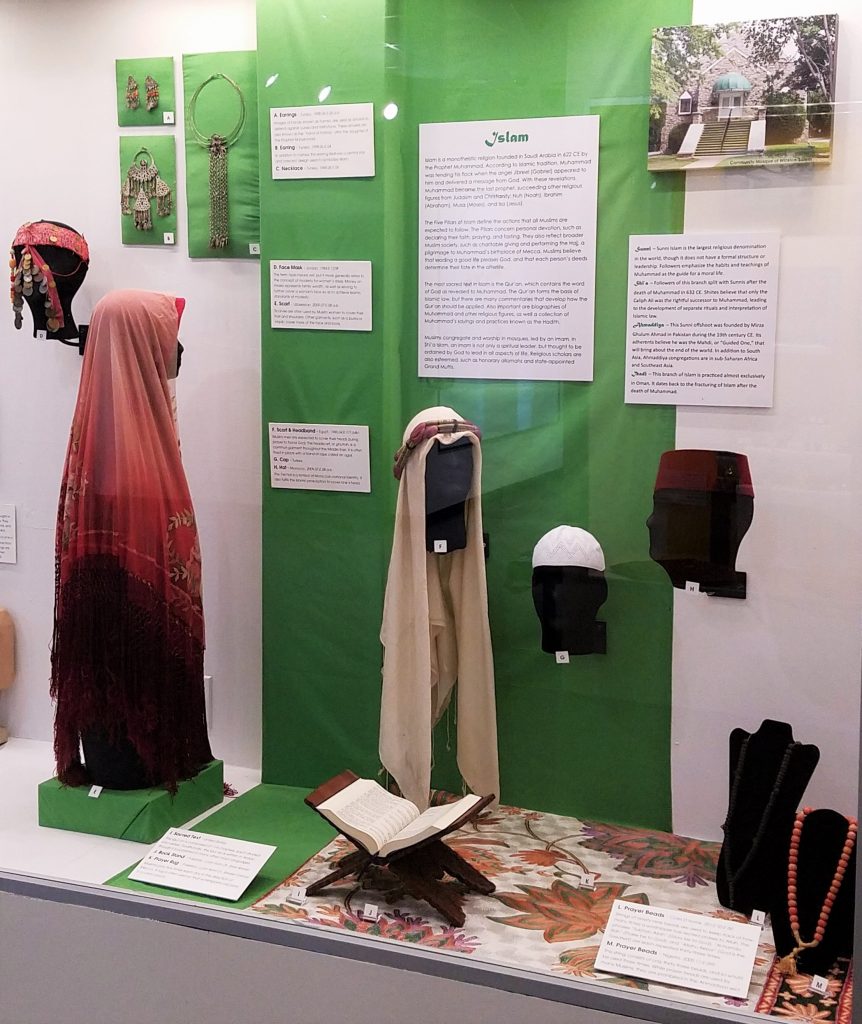
Learn about the featured objects below
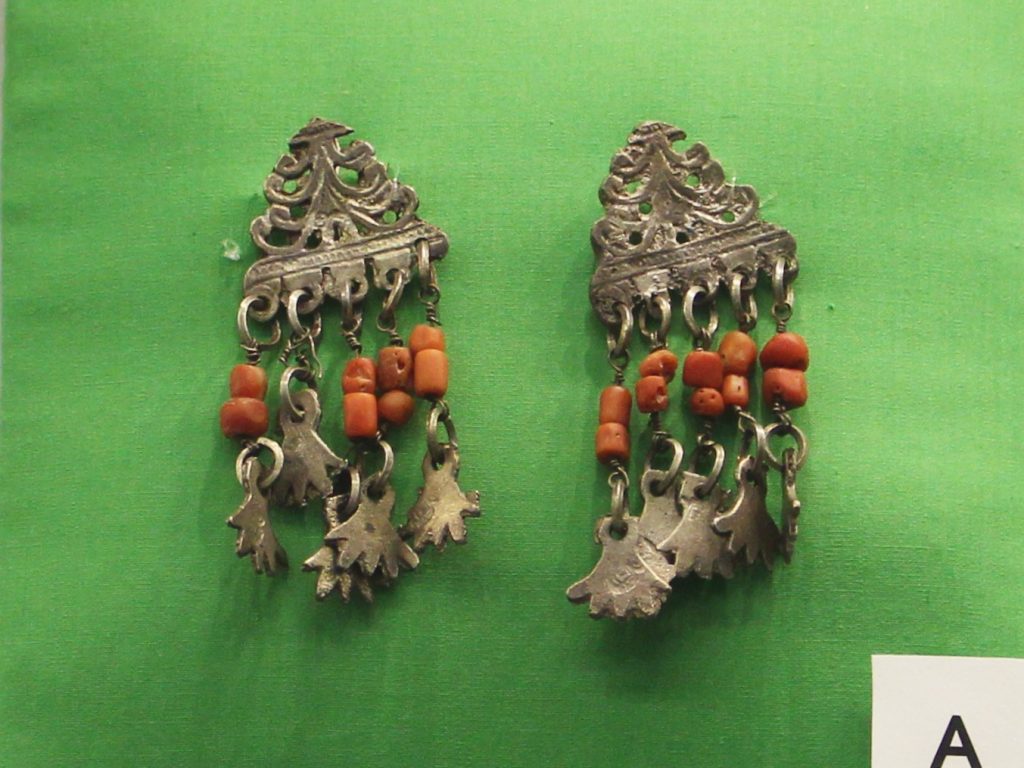
A. Earrings
Tunisia
1998.06.E.05.a-b
Images of hands, known as hamsa, are used as amulets to defend against curses and misfortune. These amulets are also known as the “Hand of Fatima” after the daughter of the prophet Muhammad.
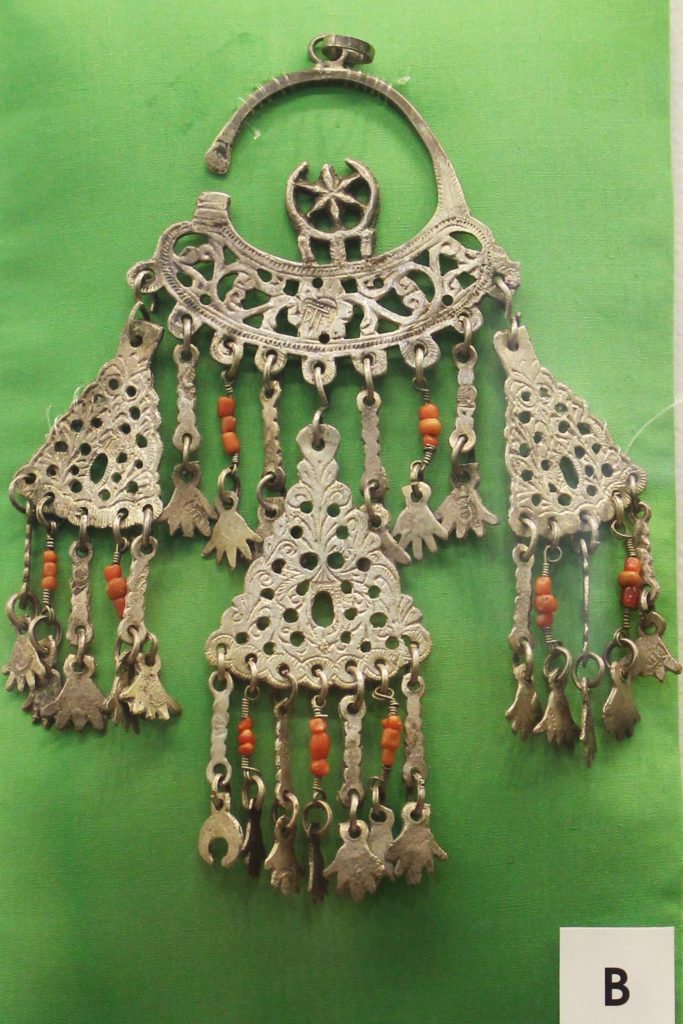
B. Earring
Tunisia
1998.06.E.04
In addition to hamsa, this earring features a central star and crescent design used to symbolize Islam.

C. Necklace
Tunisia
1998.06.E.06
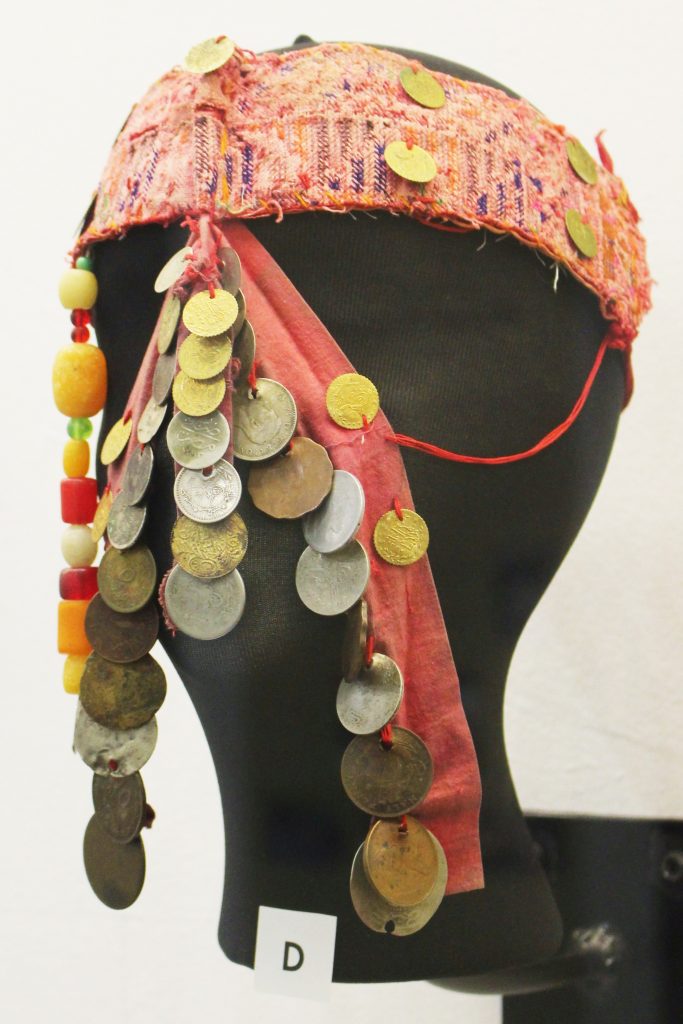
D. Face Mask
Jordan
1984.E.1238
The term hijab means veil, but it more generally refers to the concept of modesty for women’s dress. Money on masks represents family wealth, as well as serving to further cover a woman’s face so as to achieve Islamic standards of modesty.
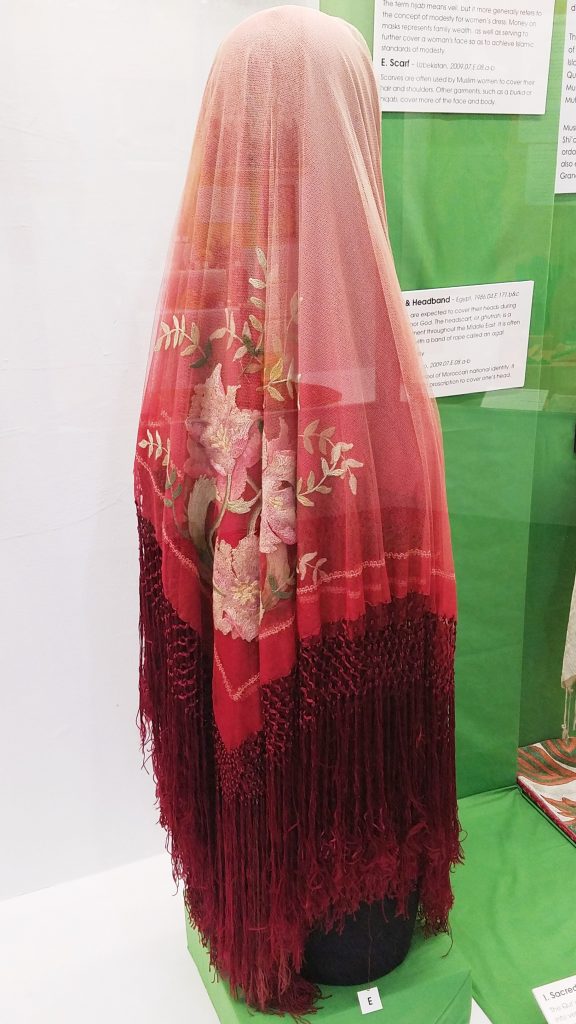
E. Scarf
Uzbekistan
2009.07.E.08.a-b
Scarves are often used by Muslim women to cover their hair and shoulders. Other garments such as a burka or niqab cover more of the face and body.
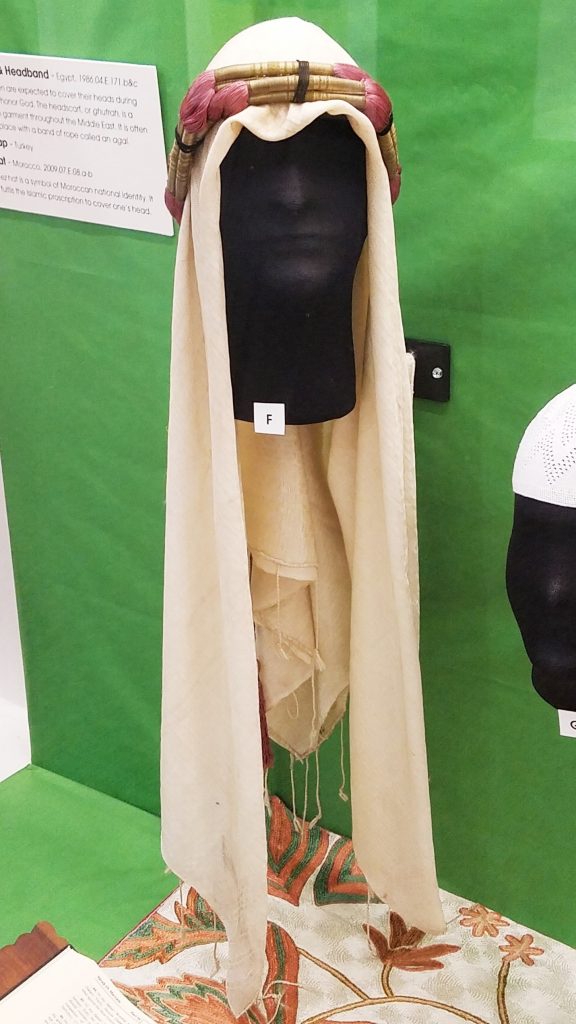
F. Scarf and Headband
Egypt
1986.04.E.171.b-c
Muslim men are expected to cover their heads during prayer to honor God. The headscarf, or ghutrah, is a common garment throughout the Middle East. It is often fixed in place with a band of rope called an agal.
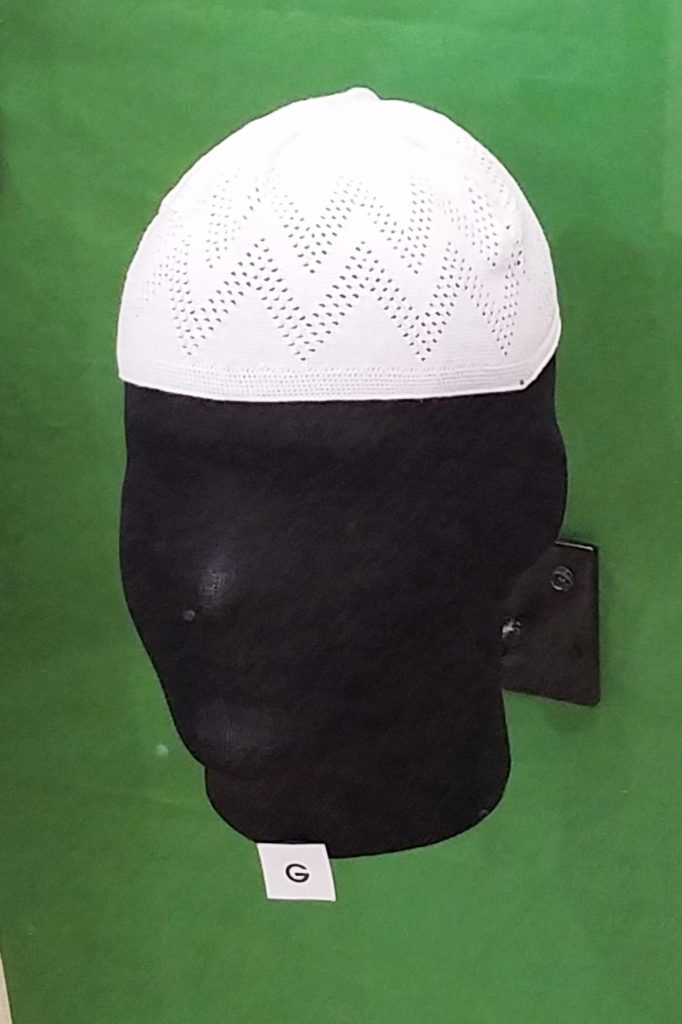
G. Cap
Turkey
Education Collection
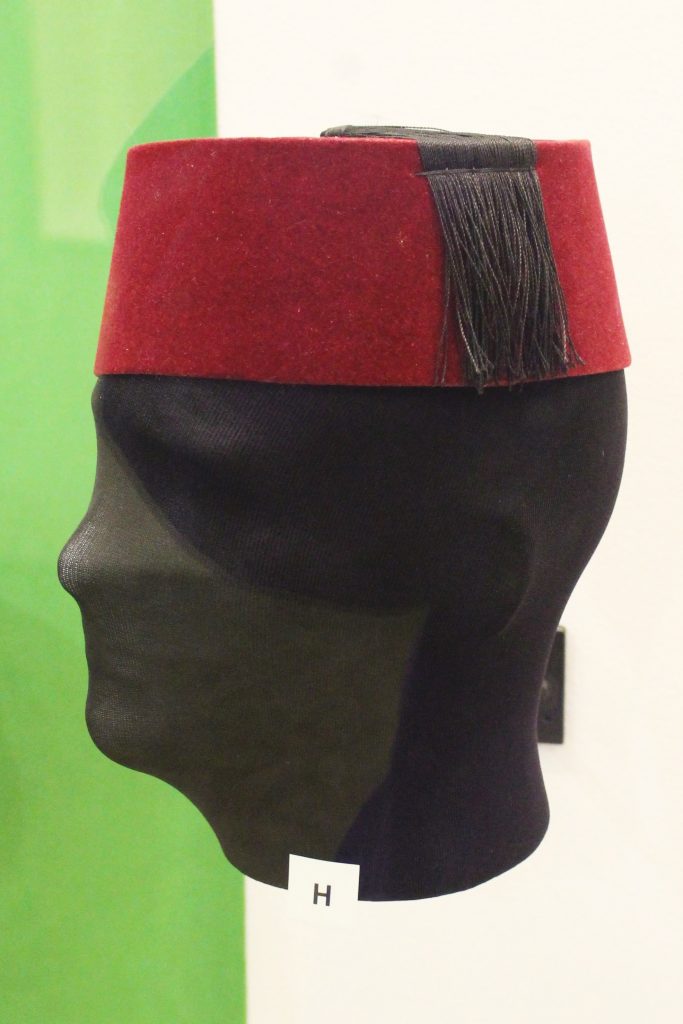
H. Hat
Morocco
2007.04.E.08
The fez hat is a symbol of Moroccan national identity. It also fulfills the Islamic proscription to cover one’s head.
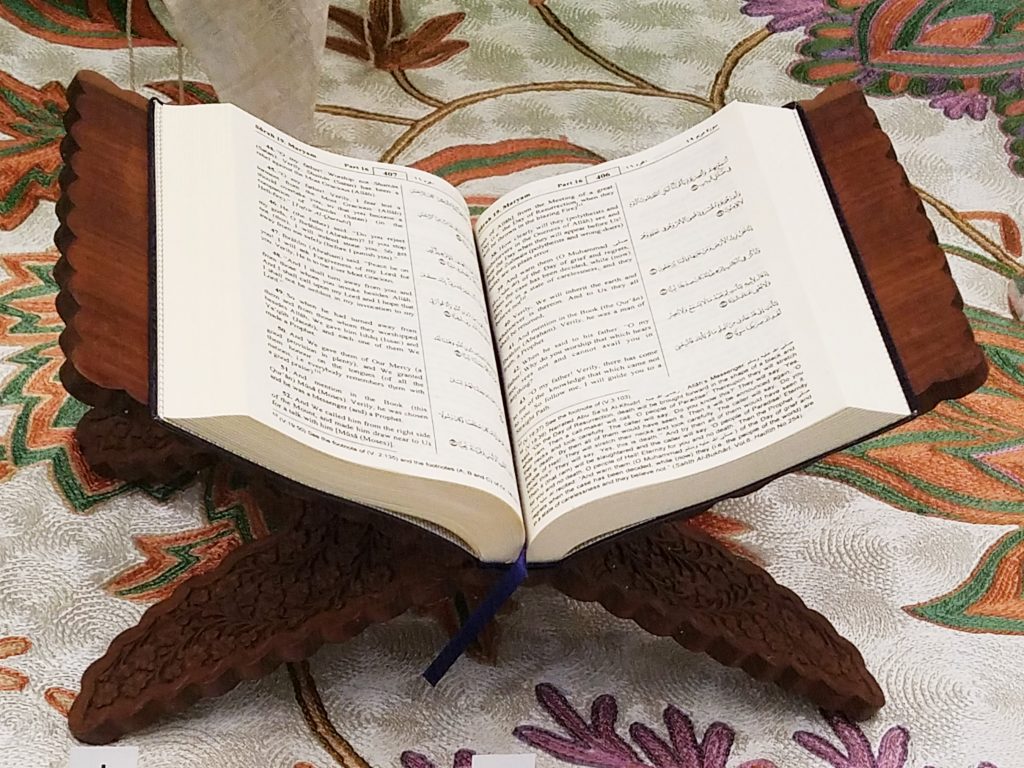
I. Sacred Text
United States
Education Collection
The Qur’an is composed of 114 chapters, each divided into verses. Traditionally, the Qur’an is written in Arabic, though it is published in many other languages.
J. Book Stand
Pakistan
Loan from Dr. Stan Bohrer
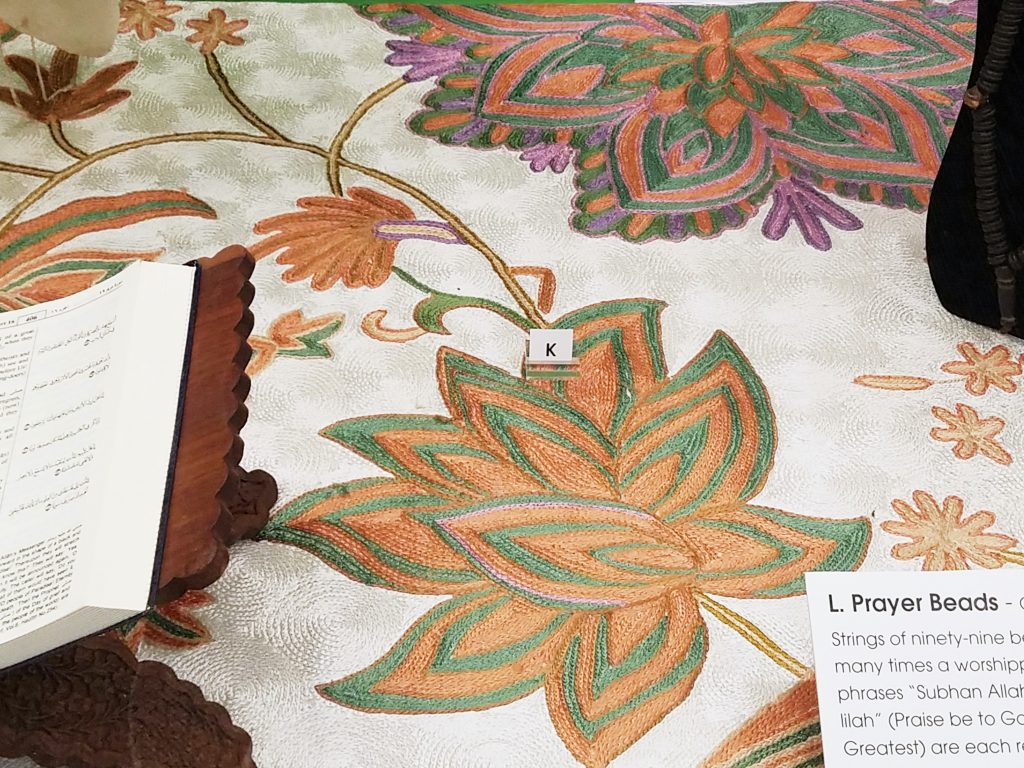
K. Prayer Rug
Pakistan
Loan from Dr. Steven Folmar
Muslims pray five times each day in the direction of Mecca. A rug is often used so that worshippers can pray in a clean place.
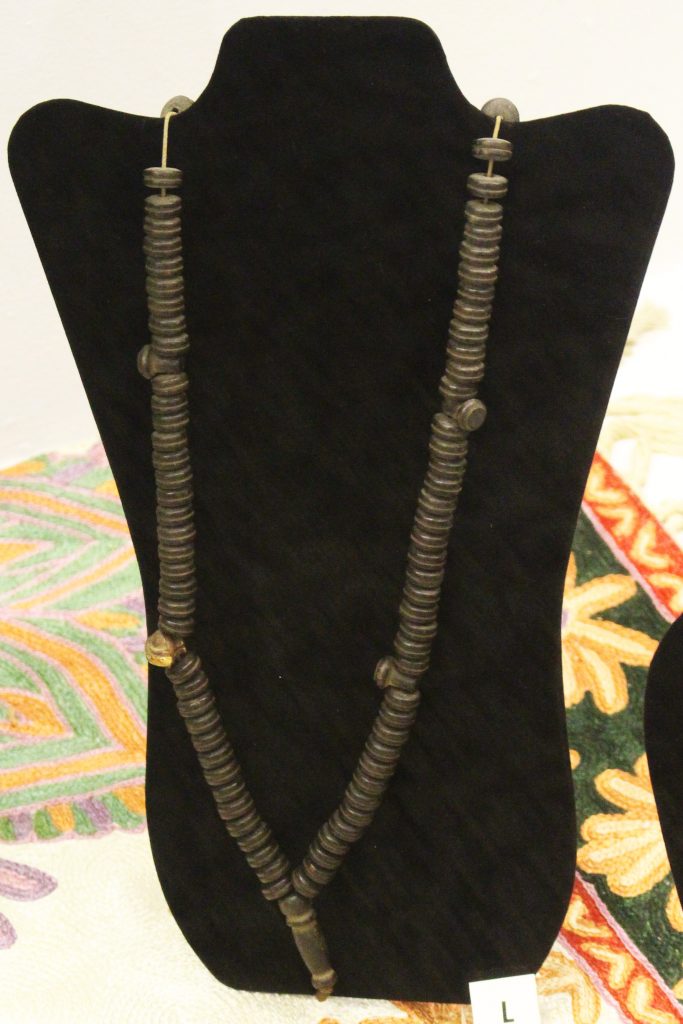
L. Prayer Beads
Cote D’Ivoire
2012.10.E.50
Strings of 99 beads are used to keep track of how many times a worshipper recites praises to Allah. The phrases “Subhan Allah” (Glory be to God), “Al-hamdu Lillah” (Praise be to God), and “Allahu Akbar” (God is the Greatest) are each repeated 33 times.
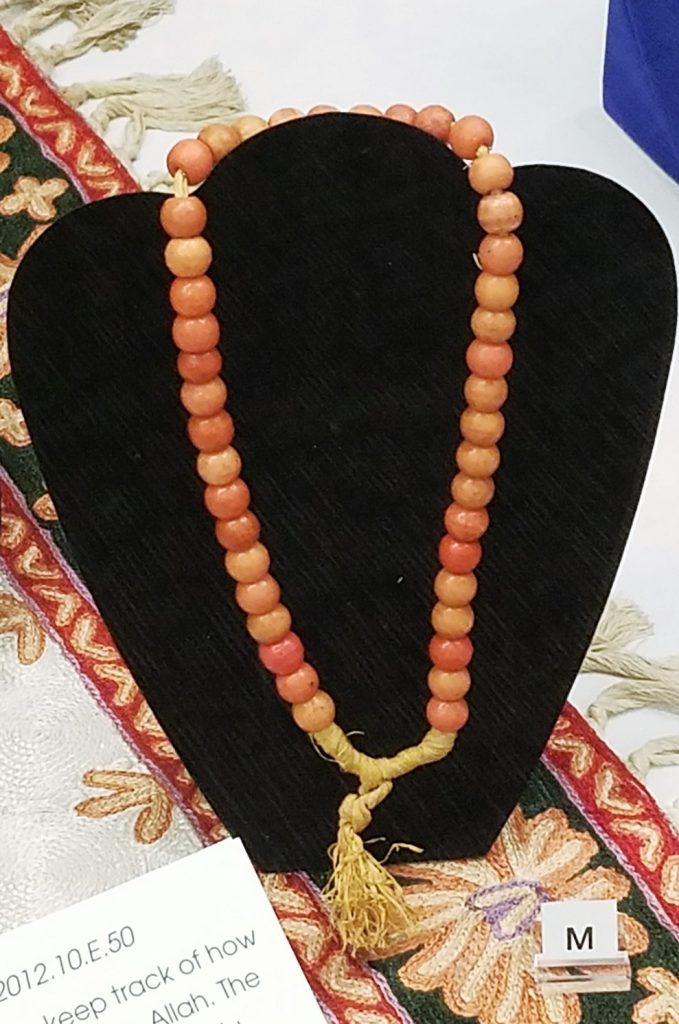
M. Prayer Beads
Nigeria
2005.11.E.095
This string consists of only 33 beads, and so would be used three times. While prayer beads are used by many Muslims, they are prohibited in the Ahmadiyya sect.

